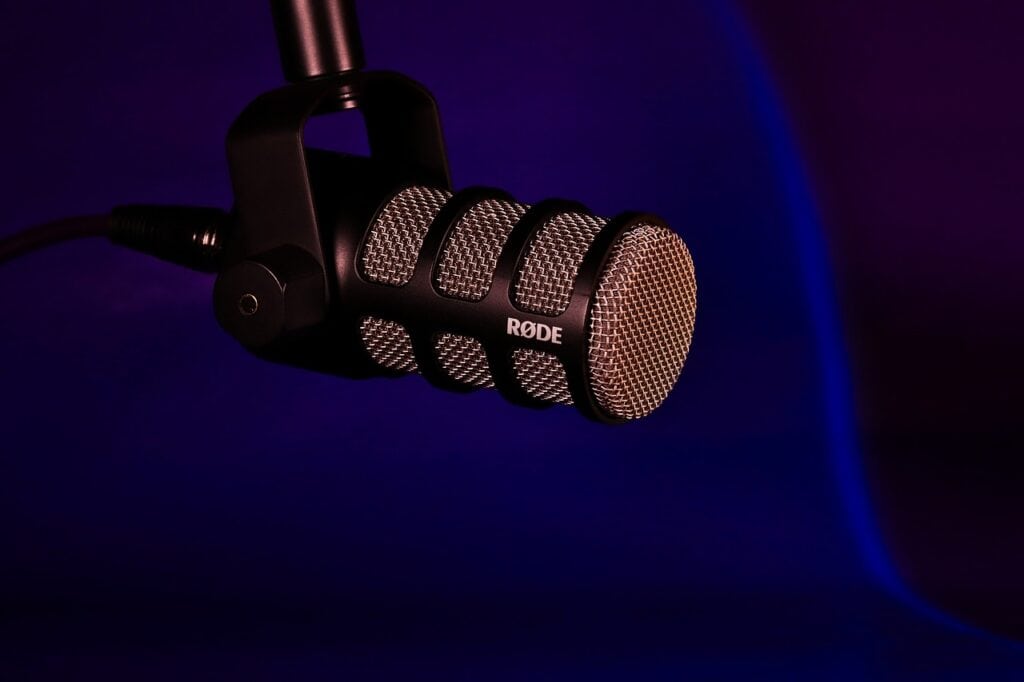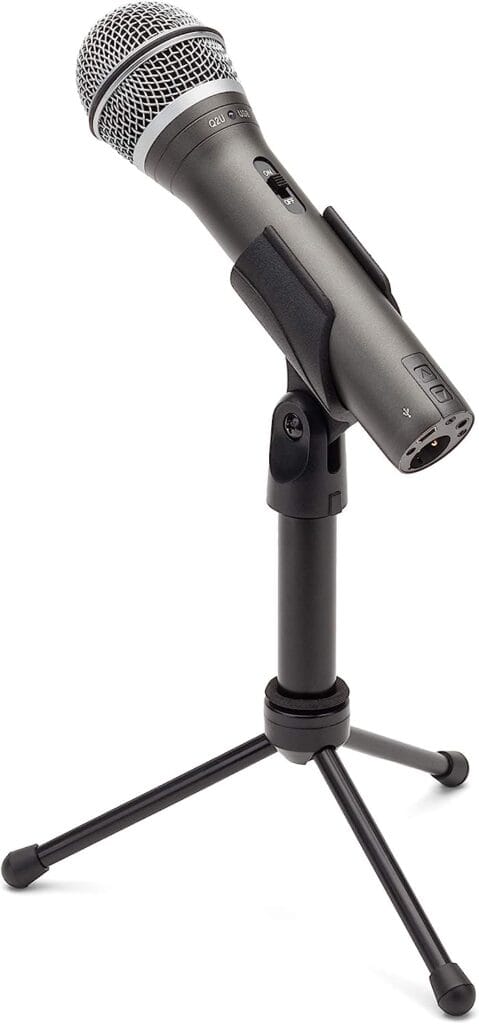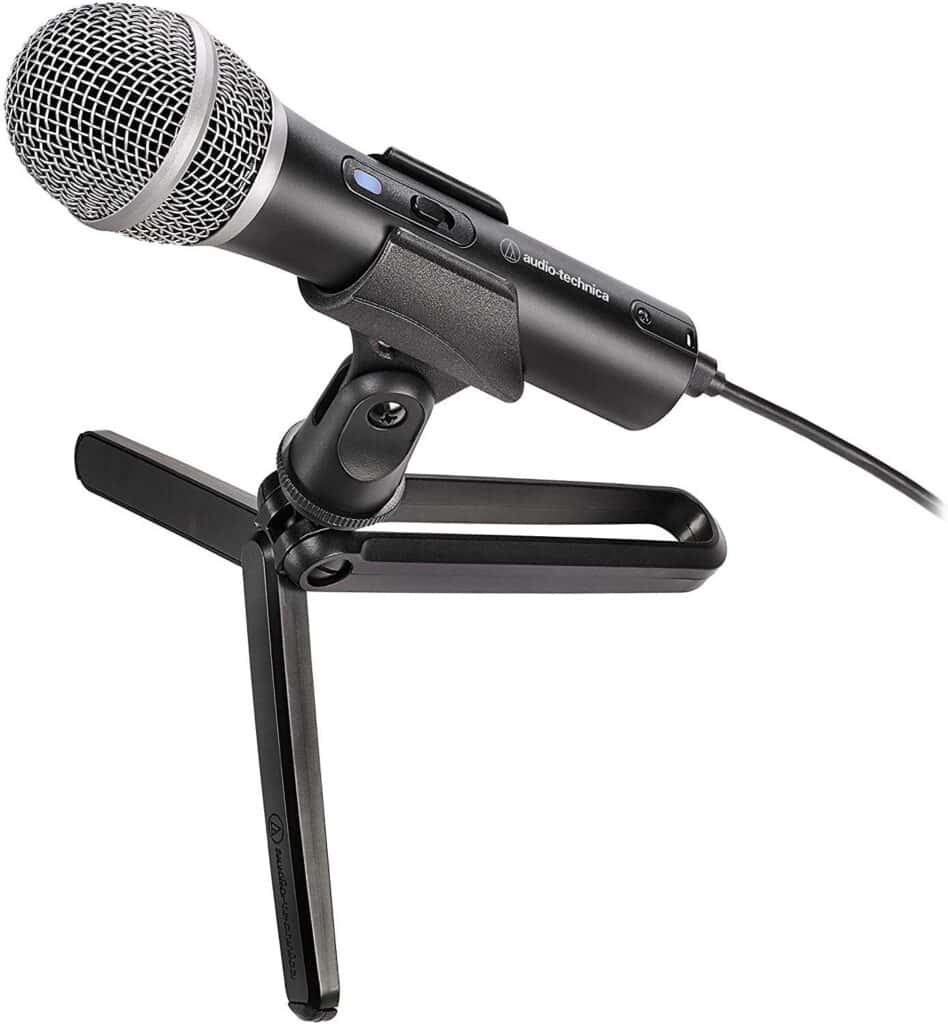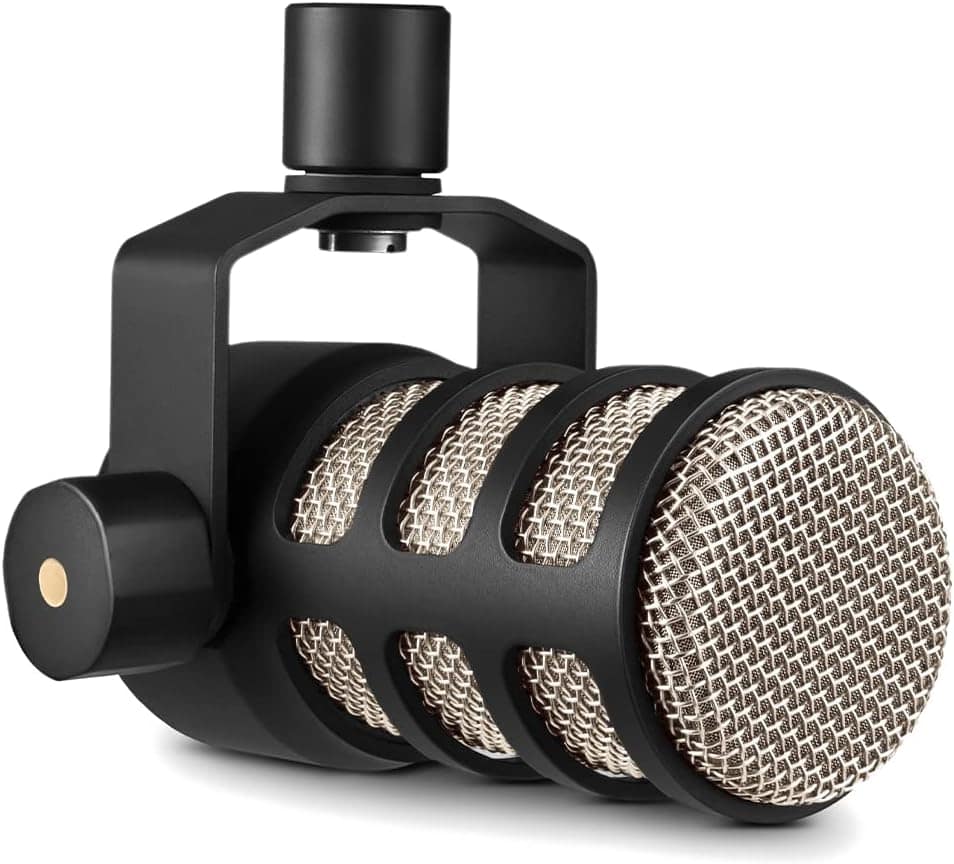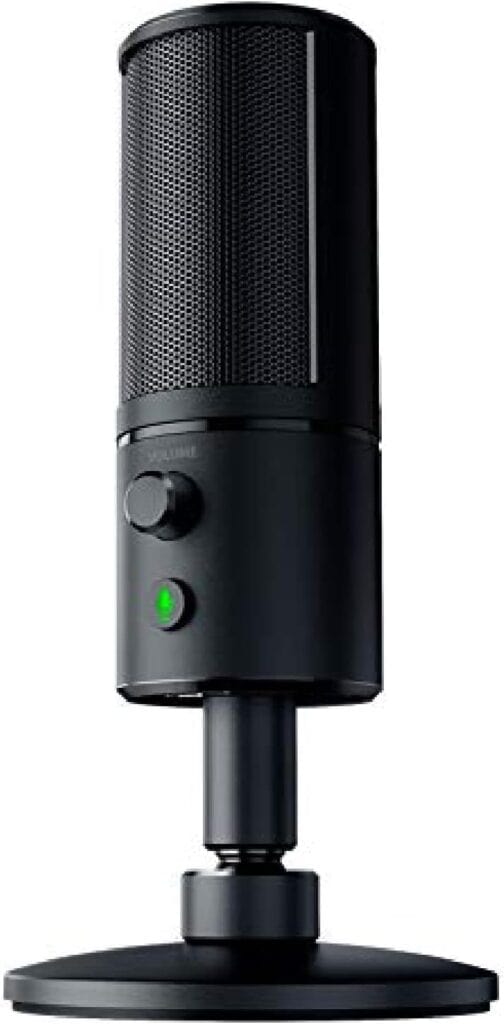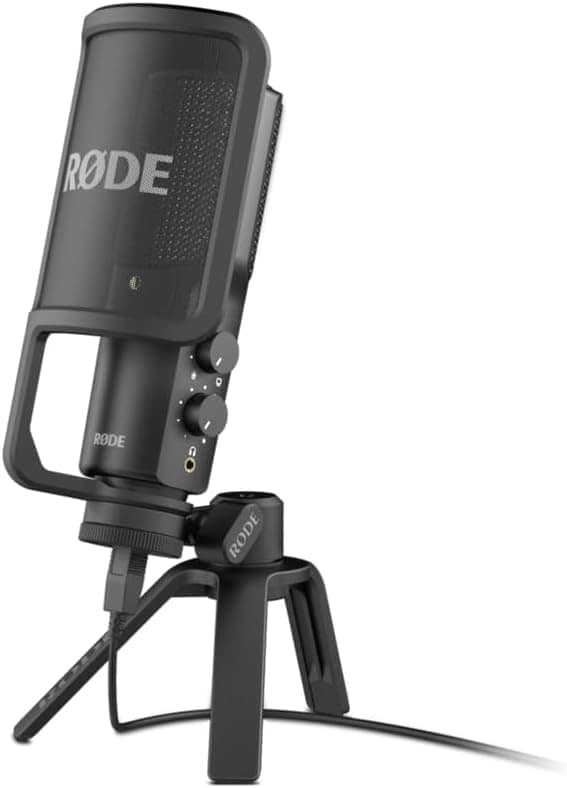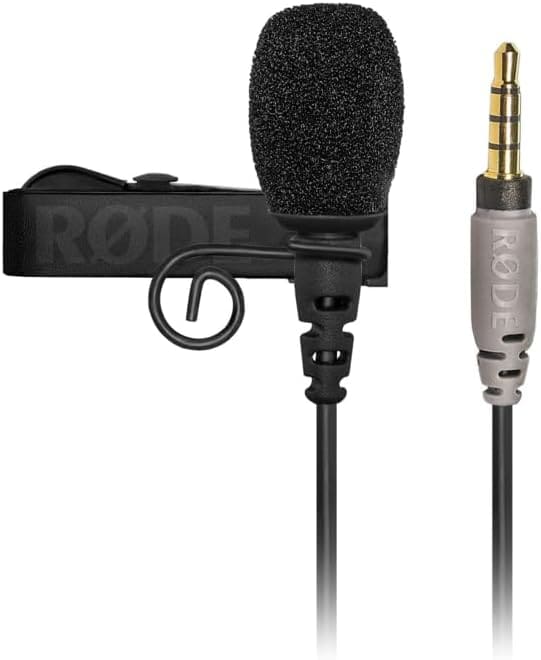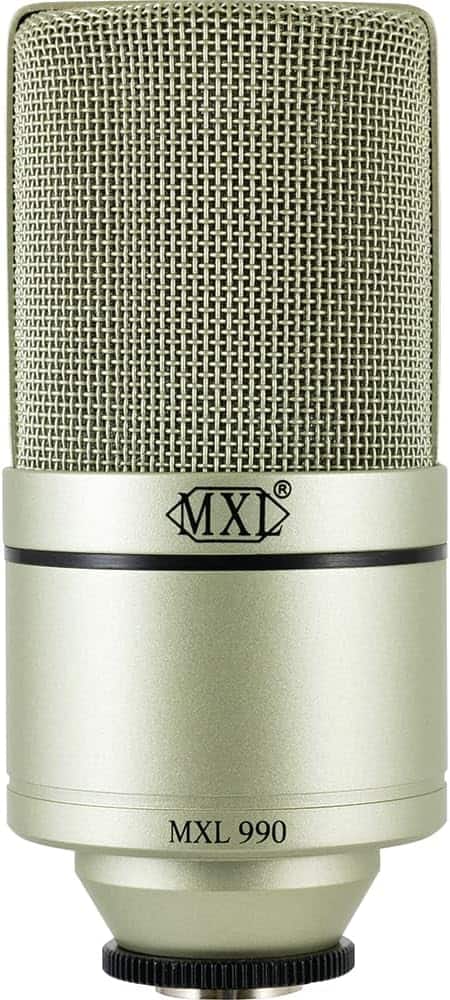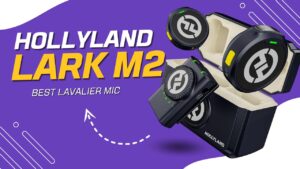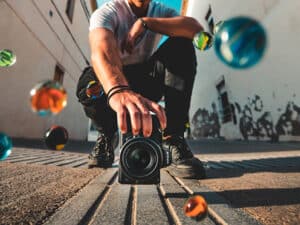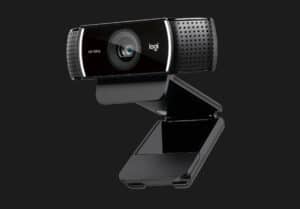Starting a podcast is an exciting endeavor, but selecting the right tools can be a daunting task. Aspiring content creators, particularly beginners, need a microphone that strikes a balance between user-friendliness, quality, and affordability.
In this article, we offer a curated list of the best podcast microphones for beginners, offering you a seamless entry into the realm of podcasting and content creation.
Castos is a participant in the Amazon Services LLC Associates Program. We may earn commissions from your purchases on Amazon.com, though at no cost to you.
The 9 Best Podcast Microphones for Beginners
This curated list of the best podcast microphones for beginners considers three important factors:
- Ease of use: You need user friendly features and products with straightforward setup so you can start recording right away.
- Affordability: Since your podcast doesn’t make any money yet, you need tools that don’t strain your budget.
- Sound quality: While it’s true that higher tier microphones offer exceptional sound, you can still capture good audio with an inexpensive mic.
Let’s jump into our list of the best podcast microphones for beginners!
1. Samson Q2U
The Samson Q2U is one of the best podcast microphones for beginners due to its affordability, versatility, and ease of use.
It offers dual compatibility with USB and XLR connections. Beginners can directly plug the Q2U into their computers via USB, eliminating the need for complex audio interfaces. Alternatively, as you advance, you can transition to XLR connections for improved sound quality.
The Q2U offers solid audio performance, capturing clear and balanced sound while minimizing background noise. Its dynamic microphone design reduces sensitivity to room noise, making it suitable for home recording environments.
The microphone also comes with a built-in headphone jack for real-time monitoring, crucial for podcasters to ensure audio quality while recording.
Furthermore, the Q2U package includes essential accessories like a desktop tripod stand, XLR cable, and foam windscreen. This lets you start podcasting without requiring additional purchases.
Overall, the Samson Q2U is affordable and user friendly, which make it an ideal choice for new podcasters, providing a professional-grade tool to kickstart their journey.
Learn more about the Samson Q2U in our complete review.
2. Audio Technica ART2100x
The Audio-Technica ATR2100x is an excellent microphone for novice podcasters due to its exceptional audio quality, versatile connectivity, and user-friendly features. With both USB and XLR outputs, beginners can easily connect the microphone to their computers or audio interfaces, offering flexibility as their podcasting setup evolves.
The ATR2100x’s dynamic microphone element effectively reduces background noise and captures clear, professional-grade sound. This feature is particularly beneficial for podcasters recording in diverse environments. Its built-in headphone jack allows direct monitoring, enabling podcasters to ensure audio quality in real-time.
Moreover, the microphone’s sturdy construction and included tripod desk stand provide stability and convenience for desktop recording. The package also contains XLR and USB cables, eliminating the need for additional purchases and making it an all-in-one solution.
Overall, the Audio-Technica ATR2100x’s superb audio performance, adaptable connectivity, and comprehensive package make it an ideal choice for aspiring podcasters, facilitating an easy and high-quality entry into the world of podcasting.
3. RØDE PodMic
The RØDE PodMic is an excellent choice for beginner podcasters due to its tailored design and superior audio quality. Its dynamic capsule is optimized for speech recording, which reduces background noise and plosive sounds like “p” and “b” for clear vocals. This is especially crucial for podcasting environments that lack professional soundproofing.
Its rugged build ensures durability, essential for newcomers who might not have a dedicated recording space. The mic’s cardioid polar pattern further minimizes ambient noise, focusing on the podcaster’s voice.
With a reasonable price point, the PodMic offers a professional-grade option without overwhelming new users with excessive features. Its XLR connection also allows flexibility for future audio setups.
4. Rode Podcaster
The Rode Podcaster is one of the best podcast microphones for beginners due to its user-friendly design and impressive performance. Geared towards spoken-word content, this USB microphone eliminates the complexities of separate audio setups, which is particularly advantageous for beginners.
Designed with a dynamic capsule, the Podcaster excels at reducing background noise and echoes. Its cardioid polar pattern zeroes in on the speaker’s voice, reducing ambient noise.
Durability is a hallmark of the Podcaster, coupled with an integrated pop filter that reduces plosive sounds. For new podcasters without a lot of gear or mic experience, these attributes are crucial for optimal sound quality.
Offering affordability without compromising quality, the Rode Podcaster simplifies the recording and editing processes by directly connecting to computers via USB. By prioritizing ease of use and audio excellence, it empowers beginner podcasters to focus on crafting compelling content.
5. Razer Seiren X
The Razer Seiren X is one of the best podcast microphones for beginners due to its user-friendly features and quality audio. Its compact and sleek design easily fits into any podcast setup.
The Seiren X boasts a 25mm condenser capsule that delivers clear and detailed sound. Its built-in shock mount reduces vibrations and handling noise. The microphone’s supercardioid polar pattern ensures focused audio capture from the front, minimizing unwanted background noise. USB connectivity simplifies setup for beginners..
With its affordability and impressive features, the Razer Seiren X provides an accessible entry point into podcasting. This microphone’s simplicity, quality, and compact design make it an ideal for new podcasters.
6. Rode NT-USB
The Rode NT-USB offers exceptional audio quality, user-friendly design, and versatility. Its large-diaphragm condenser capsule captures clear and detailed sound.
The cardioid polar pattern focuses on the front sound source, which reduces ambient noise, even in less controlled environments. This is perfect for solo podcasters or interview scenarios. The USB connection means it doesn’t require any extra equipment.
This microphone includes a pop shield that minimizes plosive sounds and a desk stand for immediate use. It’s also compatible with both Windows and Mac systems, ensuring accessibility to a wide range of users.
7. Rode Smartlav+
The Rode Smartlav+ is an excellent choice for beginner podcasters due to its user-friendly design and solid audio quality. This lavalier microphone offers plug-and-play simplicity, as it can be directly connected to smartphones, tablets, or DSLR cameras, eliminating the need for complex setups. Its compact size and clip-on nature ensure easy attachment to clothing, enhancing comfort during podcast recording.
The Smartlav+ stands out with its professional-grade condenser capsule, which captures clear and balanced audio, minimizing background noise. Its omnidirectional pattern captures sound from all directions, so you don’t need perfect positioning.
For beginners, the Smartlav+ provides an affordable entry point into podcasting without compromising on quality. It’s versatile, allowing hosts to record interviews, monologues, or group discussions on the go. Additionally, Rode’s reputation for durable build quality and dependable customer support adds to its appeal.
8. MXL 990
The MXL 990 offers beginner podcasters a compelling option due to its combination of affordability and quality audio performance. This condenser microphone delivers a warm and rich sound that can elevate podcast recordings.
With a cardioid polar pattern, the MXL 990 captures the primary sound source while minimizing background noise, enhancing the clarity of spoken content. This is particularly valuable for podcasters recording in diverse environments.
The microphone’s wide frequency response and low self-noise contribute to clear and detailed recordings, even without extensive soundproofing. The MXL 990 is well-suited for capturing various vocal tones, making it versatile for solo hosts or interview-based podcasts. The plug-and-play USB connection, so you don’t need any extra gear to capture audio on your computer.
9. Shure SM58
The Shure SM58 is an ideal podcasting microphone for beginners due to its legendary durability, versatility, and consistent audio performance. Renowned in the industry, the SM58’s rugged construction makes it a reliable investment for new podcasters.
Its cardioid polar pattern captures the host’s voice while rejecting ambient noise and feedback, resulting in a professional recording. This is particularly beneficial for those recording in less controlled environments.
The SM58’s popularity extends beyond podcasting. It’s widely used for live performances due to its ability to handle high sound pressure levels without distortion. This makes it suitable for recording multiple voices (or musical instruments if desired).
Affordability is another advantage of the SM58. Unlike other Shure microphones that sell for hundreds or thousands of dollars, the SM58 is quite affordable.
The one downside to the SM58 is that it only offers an XLR connection. This means you’ll need an audio interface of some kind in order to capture your recording. Check out our review of the best audio interfaces for some options.
Should I Choose a Dynamic or Condenser Mic?
For beginners, a dynamic microphone is generally more practical. Dynamic mics are rugged, less sensitive to ambient noise, and better suited for less controlled recording environments such as home setups. They handle high sound pressure levels well and provide a balanced sound.
Condenser microphones, while offering superior sensitivity and capturing more detail, are more delicate and require controlled surroundings to avoid picking up unwanted background noises. They’re commonly used in professional studios where noise can be minimized.
We recommend starting with a dynamic microphone because it’s forgiving in various recording situations, making it ideal for newcomers still optimizing their recording space. As your skills grow and you potentially upgrade your recording environment, you can consider transitioning to a condenser microphone for enhanced audio quality.
Ultimately, the choice depends on your recording environment, budget, and desired sound quality.
Should I Choose an XLR or USB Microphone?
The choice between XLR and USB microphones hinges on your podcasting goals and setup. USB microphones are convenient for beginners due to their direct connectivity to computers, requiring no external audio interface. They’re perfect for solo podcasting or quick setups, but their audio quality might be limited compared to XLR options.
XLR microphones offer superior audio quality and are favored by professionals. They provide flexibility for more advanced setups, allowing you to use dedicated audio interfaces for better sound control and recording multiple microphones. While they demand more gear and setup time, XLR mics are an investment in long-term versatility and improved sound.
For a simple, straightforward start, USB mics are suitable. However, if you’re committed to podcasting and anticipate growth, XLR microphones offer a more adaptable and higher-quality solution. Consider your budget, recording environment, and aspirations when making your choice.
Boost Sound Quality with the Right Gear and Good Technique
Beyond your microphone, improving the audio quality of a podcast recording involves a combination of the right equipment and good recording techniques. Here’s a step-by-step guide to help you boost the audio quality of your podcast:
Acoustic Environment
Choose a quiet and well-insulated room for recording. Minimize background noise by using noise-absorbing materials like foam panels, carpets, and curtains. Avoid reflective surfaces that can cause echoes.
Pop Filter and Windscreen
Attach a pop filter to your microphone to reduce plosive sounds (like “p” and “b” sounds) and a windscreen to prevent unwanted wind noise. This helps maintain a clean audio recording.
Mic Placement
Position the microphone close to your mouth (6-12 inches away) to capture clear and direct sound. Experiment with microphone angles and distances to find the best position that suits your voice. Check out our full guide on mic techniques.
Mic Stand and Shock Mount
Use a stable mic stand to eliminate vibrations and the noise that comes from handling a microphone. A shock mount can further isolate the microphone from any vibrations on your desk or surroundings.
Audio Interface
If you’re using an XLR microphone, connect it to a good-quality audio interface. This device converts the analog signal from the microphone into a digital signal for your computer to process.
Recording Software
Use professional recording software to capture your podcast. Audacity, Adobe Audition, GarageBand, or Reaper are popular options. Set your recording settings to a high bitrate and sample rate for better audio quality.
Proper Levels
Ensure your audio levels are neither too low nor too high. Aim for your audio peaks to be around -6 dB to -3 dB to prevent clipping. Adjust the input gain on your audio interface or microphone to achieve this balance.
Regular Monitoring
Invest in a good pair of headphones for monitoring your recordings. Regularly listen to your recordings with headphones to identify and address any issues.
Practice and Patience
Improving audio quality takes practice and patience. Continuously refine your recording techniques, equipment setup, and post-processing skills to achieve the best results.
Buy Now, Upgrade Later
As you begin your podcasting journey, it’s important to buy one of the best podcast microphones for beginners on this list. Don’t over complicate things by purchasing a microphone that forces you to adjust advanced settings or connect additional pieces of equipment.
For now, keep things simple. You can always upgrade later. Once you know more about your needs and preferences, you’ll know exactly what to look for in your next microphone.
When you’re ready to upgrade, make sure to check out our lists of the best podcasting microphones for all budgets. If you have specific needs, read our guides on the best lavalier microphones and the best live streaming microphones.
Looking for Help With Your Podcast?
Are you ready to launch your own podcast but feeling a bit overwhelmed with the technicalities of finding the right gear and setting up your show? Castos Productions will streamline the process for you.
Castos Productions is an award-winning podcast production agency. It’s a best-in-class media team that helps brands achieve exponential growth. We use a proven four-step system to grow B2B businesses.
- An engaging podcast to showcase long-form conversations with leaders in your industry;
- A thriving Youtube channel to grow visual traction for your product or service;
- A cohesive social media strategy to bring new attention to your brand every week;
- A valuable-packed newsletter to keep your brand top of mind for your best-fit audience members.
Part of our process is helping you choose the perfect gear for your podcasting needs. We’ll guide you through selecting microphones, headphones, audio interfaces, and more, so your recordings sound professional from the get-go.
This is a turnkey podcast agency solution that lets you go from “maybe this will work” to being the star of your brand growth team. Book a free, 30-minute strategy call now.
